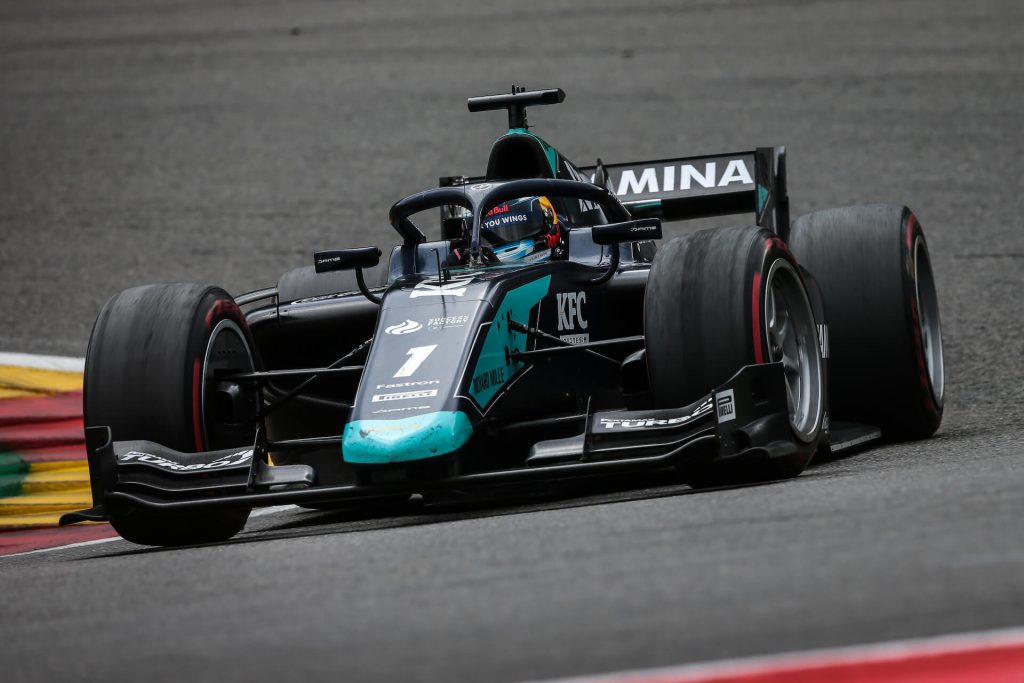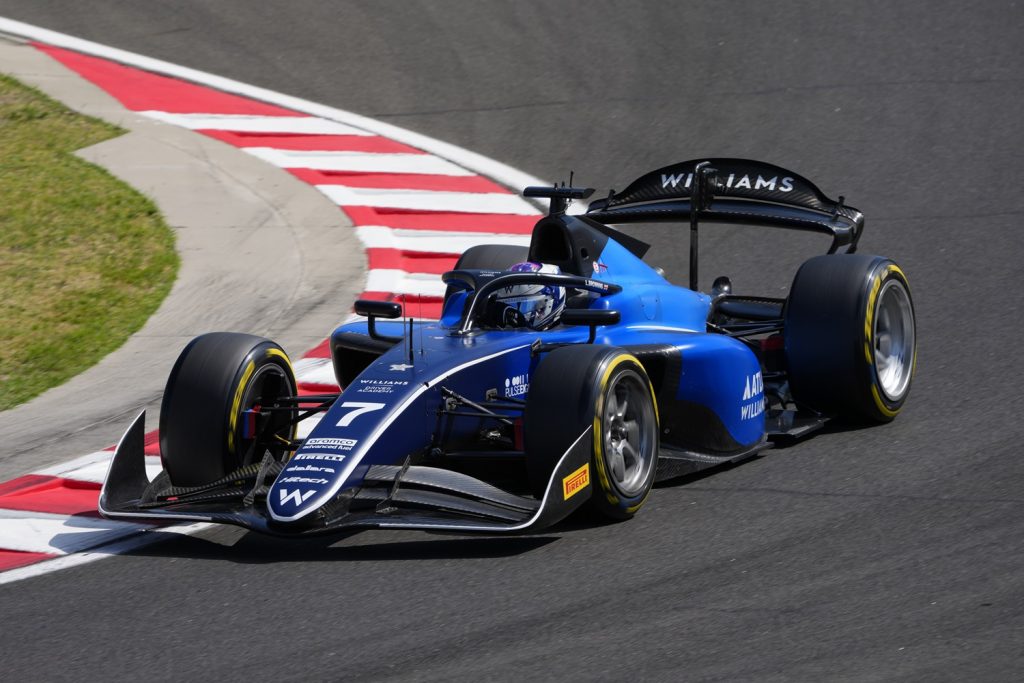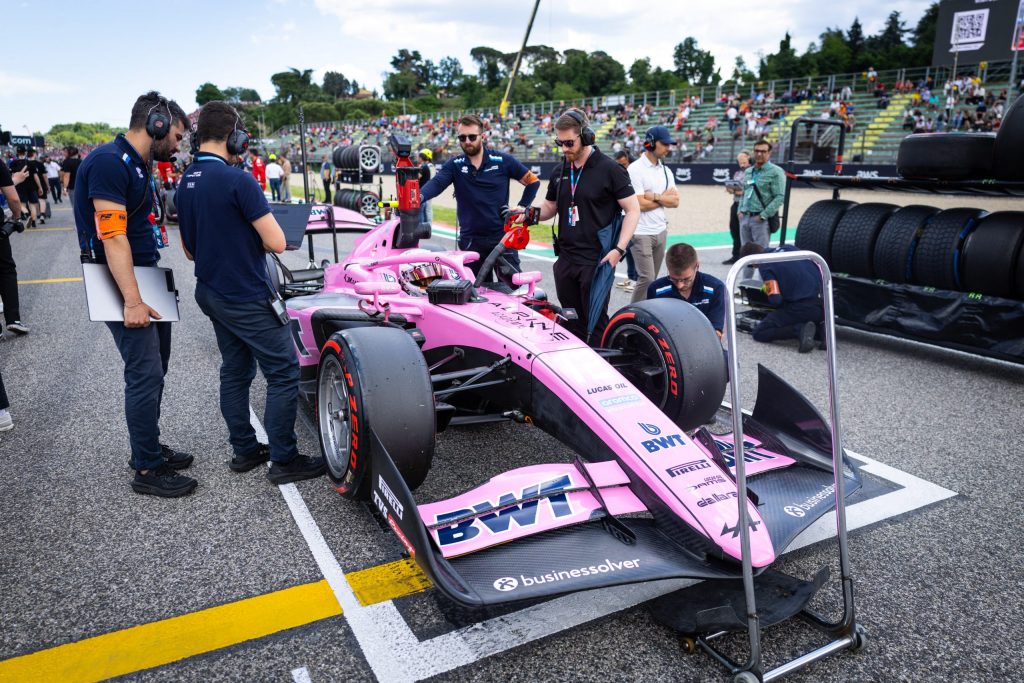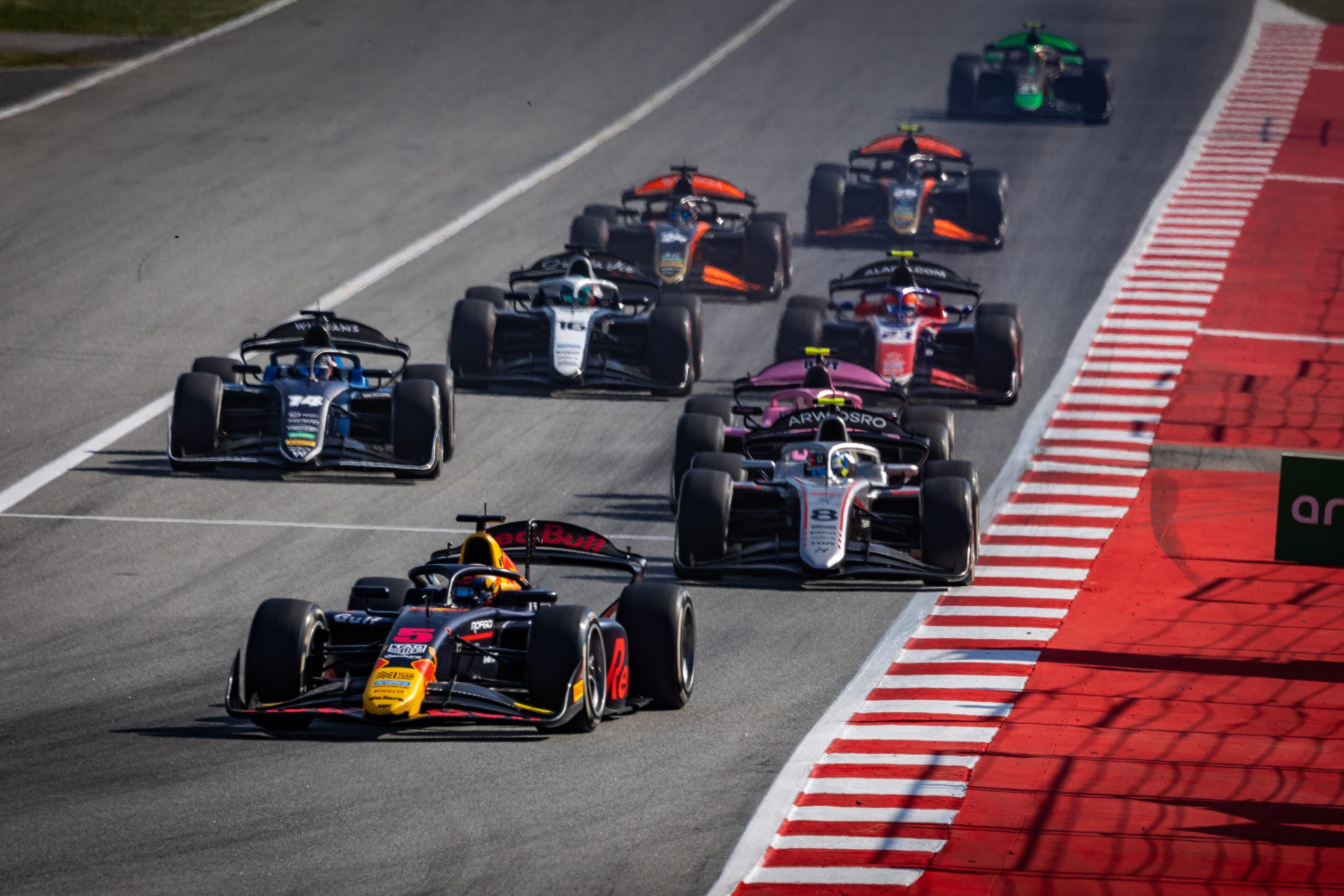Formula 2 is where future Formula 1 champions are forged. It’s the final step on the journey from karting to the “pinnacle” of motorsport, but also a fiercely competitive championship in its own right. There are no multi-million-dollar development programs here, no aerodynamic laboratories or armies of engineers to “buy” a driver’s speed; everyone races with the same chassis, the same tyres, and the same engine.
In this environment, talent is exposed in its purest form. If you’re quicker, it’s not because your car has a better floor or a secret engine mode, it’s because you are better. That’s why F2 is more than just the waiting room for Formula 1; it’s its own theatre of dramatic duels, surprise victories, and inspiring stories of rise and resilience.
Formula 2 Origins and Evolution
From GP2 to F2 – How It All Began
Today’s Formula 2 grew out of the GP2 Series, which launched in 2005 as the replacement for the old Formula 3000. The mission of GP2 was clear: to provide drivers with an experience as close to F1 as possible, but at a fraction of the cost. The key was standardisation, all teams used the same Dallara chassis, identical engines, and a single tyre supplier. This eliminated the technology race and put the spotlight firmly on driver skill.
From the very beginning, GP2 proved its worth. Nico Rosberg won the inaugural title in 2005 and jumped straight into Formula 1, while Lewis Hamilton’s spectacular rookie season in 2006 catapulted him directly into McLaren. It quickly earned the reputation as F1’s ultimate talent factory.
In 2017, the FIA rebranded GP2 as Formula 2 to align with its clear motorsport ladder – F4, F3, F2, F1. Alongside the name change came a new generation of cars, updated safety standards, and official recognition as F1’s premier feeder series.
Key Milestones in Formula 2 Development
While the core concept has remained the same: identical machinery, powerful engines, and a focus on driver performance F2 has gone through several key evolutionary stages:
- GP2 Era (2005–2016) – Naturally aspirated Renault V8 producing around 612 hp, raw power delivery, minimal driver aids. Racing was chaotic at times, but often spectacular.
Lewis Hamilton GP2 2006#LewisHamilton pic.twitter.com/DFwgP6gNxW
— Formula T (@FormulaT90) February 19, 2025
- F2 Rebrand (2017) – Introduction of the turbocharged Mecachrome V6, improved aerodynamics, and the halo safety device a year later.
And here is my @GP2_Official car for this season. Simply beautiful 🔴 #ReadyToGo pic.twitter.com/G3Gjp7dVX9
— Charles Leclerc (@Charles_Leclerc) March 9, 2017
- 2018–2023 Car Generation – Focus on downforce, safety, and durability, though reliability issues plagued early seasons.

Credit: Dutch Photo Agency via DAMS – Formula 2 car at SPA, 2020, Jüri Vips
- F2 2024-Spec Car – Designed for the next six seasons with upgraded aerodynamics, improved driver ergonomics, and reduced running costs.

Each phase has shaped the racing style. GP2 was known for its raw “gladiator” approach, while modern F2 blends tactical racecraft with all-out sprinting, especially with the two-race weekend format.
Why Formula 2 is the Gateway to Formula 1
The FIA motorsport ladder is designed as a progression system. At the base are national series and Formula 4, followed by international Formula 3. Formula 2 sits just one step below Formula 1 – the ultimate test of readiness.
In F2, drivers get their first taste of machinery that’s closer to F1 than anything lower down the ladder. They race on the same tracks, under the same conditions, and often during the same weekends as F1, in front of the same global audience.
The stakes are high: the F2 champion automatically earns the 40 points required for the FIA Super Licence, the legal ticket to compete in Formula 1. Without it, the path to F1 becomes incredibly steep.
Almost every current F1 driver has passed through F2 or its predecessor GP2 – from Hamilton, Rosberg, and Gasly to Leclerc, Russell, and Piastri. That fact alone underlines its importance in shaping the future of Formula 1.
Inside the Formula 2 Championship: Rules, Cars, and Format
Formula 2 Technical and Sporting Regulations
Formula 2 operates as a “spec series,” meaning every team is bound by the same technical package – the same chassis, engine, gearbox, and tyres. This isn’t just a cost-saving measure; it’s a deliberate levelling of the playing field so that the championship is determined by skill, preparation, and strategy rather than technological arms races.
The current car is the Dallara F2 2024 chassis, powered by a 3.4-litre turbocharged V6 Mecachrome engine producing around 620 horsepower. All cars run on Pirelli tyres, with a range of compounds supplied for each weekend depending on the circuit’s characteristics. Teams are allowed to adjust setup parameters such as suspension, ride height, wing angles, and tyre pressures but the core hardware is identical.
The FIA also imposes strict rules on:
- Pit stops – In the Feature Race, at least one mandatory stop is required to change tyre compounds.
- Fuel usage and weight – Cars have minimum weight requirements (including the driver) to prevent extreme weight-reduction tactics.
- Safety – Halo cockpit protection, FIA crash test standards, and regulated fire suppression systems are all mandatory.
- Tyre allocations – Limited sets per weekend to add strategic variety.
The philosophy is simple: no one wins because of a better car, only because of better driving, teamwork, and strategy.

Credit: Dutch Photo Agency via DAMS – Kush Maini at Pre-season testing, Barcelona 2025
Race Weekend Format – Qualifying, Sprint, Feature Race
An F2 weekend is deliberately designed to test drivers in multiple scenarios and is held alongside Formula 1 at most events. The schedule typically looks like this:
- Free Practice (45 minutes) – Drivers learn the track, experiment with setups, and gather tyre data.
- Qualifying (30 minutes) – Determines the starting grid for the Feature Race. The top 10 finishers in qualifying are then reversed for the Sprint Race grid.
- Sprint Race (approx. 120 km) – Shorter race, no mandatory pit stop, encourages aggressive overtaking and tyre management.
- Feature Race (approx. 170 km) – The main event, with a mandatory pit stop and heavier strategic elements.
Both races award points, but the Feature Race carries more weight. The mix of a flat-out sprint and a more tactical long race helps teams and F1 scouts see how drivers perform in different competitive environments.
How the Reverse Grid Shapes Racing
The reverse grid system applies to the Sprint Race. The top 10 drivers from qualifying are inverted – the 10th-placed qualifier starts on pole, and the pole-sitter starts 10th.
The aim is to:
- Promote overtaking and on-track action.
- Give midfield drivers a shot at victory.
- Force the fastest drivers to fight their way through the pack.
This often creates thrilling races with bold overtakes, unpredictable leaders, and plenty of drama. It also tests a driver’s ability to manage risk: an F1-ready driver must know how to slice through traffic without unnecessary collisions.
Formula 2 Points System Explained
How Points Are Awarded in the Sprint and Feature Races
Formula 2 uses a dual-race weekend format, meaning points are awarded across both the Sprint Race and the Feature Race, but not equally – the Feature Race carries significantly more weight, reflecting its status as the main event.
Feature Race (Main Race) Points Distribution:
- 1st – 25 points
- 2nd – 18 points
- 3rd – 15 points
- 4th – 12 points
- 5th – 10 points
- 6th – 8 points
- 7th – 6 points
- 8th – 4 points
- 9th – 2 points
- 10th – 1 point
Sprint Race (Short Race) Points Distribution:
- 1st – 10 points
- 2nd – 8 points
- 3rd – 6 points
- 4th – 5 points
- 5th – 4 points
- 6th – 3 points
- 7th – 2 points
- 8th – 1 point
The two-tier points system rewards consistent performers while giving Sprint Race winners a healthy but not overwhelming advantage. Since the Sprint Race grid is set by a reverse order of the top 10 from qualifying, it’s possible for a driver to score well in both races over a single weekend, even without winning the Feature Race.
Strategically, this means drivers must balance aggression and caution. Pushing too hard in the Sprint for a win could compromise tyre condition or risk damage before the Feature Race, where bigger points are at stake. Many title campaigns have been shaped by how well a driver manages this balance.
Big congratulations to @PierreGASLY! 🙌🇫🇷
— Oracle Red Bull Racing (@redbullracing) November 27, 2016
2016 #GP2 Champion! 🏆👏 #givesyouwings #RedBullFamily pic.twitter.com/5fvfeqyj1d
Extra Points and Tie-Break Rules in Formula 2
In addition to race result points, F2 awards bonus points for exceptional performances:
- Pole Position (Feature Race) – 2 points awarded to the fastest driver in qualifying.
- Fastest Lap – 1 point in each race, but only if the driver finishes in the top 10. This prevents backmarkers from pitting for fresh tyres late in the race to grab the lap time without being competitive.
- Max weekend total: 39 points per driver, 65 per team.
These extra points can be decisive in a championship fight. For example, a driver who consistently takes pole positions and fastest laps could earn the equivalent of an extra race win’s worth of points over a season.
Special Rules:
- Tie-breakers – If two drivers end the season with the same number of points, the title is decided by the number of race wins, followed by second places, and so on.
- Disqualifications and Penalties – Any post-race time penalties or disqualifications can alter the points table significantly, sometimes weeks after the race weekend.
- Half Points – Awarded only if less than 75% of the race distance is completed (rare, but can happen in heavy rain or red-flagged races).
The structure rewards not only outright victories but also consistency, qualifying speed, and racecraft. That’s why the F2 standings can change dramatically from one weekend to the next – a single bad round can swing the championship momentum entirely.
Formula 2 Calendar, Key Circuits and Logistics
Headline Venues of the F2 Tour
Formula 2 shadows Formula 1 almost everywhere, and 2025 is no exception: 14 rounds, 28 races, 13 countries, all on the big‑show weekends. The season opens under gum trees at Albert Park, Melbourne, then hits the desert heat of Sakhir (Bahrain) and the night‑glow speedway at Jeddah (Saudi Arabia) before Europe’s classic run: Imola, Monaco, Barcelona, Red Bull Ring (Spielberg), Silverstone, Spa‑Francorchamps, and Hungaroring. The flyaway finish is a three‑stop sprint: Monza to Baku, then Lusail (Qatar) and the twilight full‑stop at Yas Marina (Abu Dhabi).
What that means for drivers: F2 isn’t a regional series with a couple of showpieces. It’s a global haul. You learn tyre life at Sakhir on Friday, dance millimetres from Armco in Monaco on Saturday, then manage aero push at Barcelona on Sunday. If you’re good across this spread, you’re ready for the big time.
How Formula 2 Teams Travel the World
F2 doesn’t just piggyback on F1’s calendar; it rides the same logistical rollercoaster on a leaner budget and tighter headcount. The series ships cars, spares, and garage kit across continents in a rhythm that leaves no slack. After Melbourne, for example, the operation turns around at near‑sprint pace to get hardware to the Middle East double before the European grind kicks in. The official F2 ops team spells it out: pack down on Sunday night, customs and cargo coordination on Monday, hardware wheels‑up while engineers are already building the next run plan.
How they move it all
For European rounds, teams rely on trucks and consolidated logistics. For flyaway races, the core race kit travels by air. Bulky, non-critical items move by sea freight to keep costs under control. This approach comes from F1 but is scaled to F2 realities.
Across the paddock, the norm is a multi-modal mix. Air handles time-sensitive race kit. Sea moves heavy or hospitality items. Road covers the continental legs. The main constraint isn’t money, it’s calendar density. Back-to-back races compress de-rig, transit, and rebuild into a 96-hour puzzle.
The human side
Two-car squads rotate mechanics and engineers to stay sharp during triple-headers. Drivers battle body-clock whiplash, Melbourne jet-lag one week, desert nights the next. Then comes Europe’s early-morning run plans.
The secret is repetition. Drill pit-stops, drill garage builds, drill communications. In F2, time loss isn’t solved with a new floor. It’s prevented with clean execution.
Formula 2 Teams and Drivers of 2025
Number of Teams and the Paddock Structure
Formula 2 runs with 11 teams and 22 drivers (two cars per team) mirroring the operational rhythm of F1 but in a tightly controlled spec environment.
On a typical weekend, each outfit rolls in with two race engineers, data and performance engineers, a crew of mechanics, tyre technicians, and a slim but efficient trackside ops/PR unit, sharing the F1 paddock footprint and TV window. It’s deliberately lean and talent‑centric by design.
Structurally, the F2 paddock is a proving ground closely tied to Formula 1’s ecosystem. Many teams have direct affiliations with top-flight driver academies such as Red Bull, Alpine, Williams, Ferrari, Toyota/TGR, and McLaren ensuring that every session doubles as a live audition. The rulebook keeps costs and development frozen, while tyre allocations and parc fermé regulations inject strategic jeopardy that talent scouts are eager to study.
Meet the 2025 Grid – Teams at a Glance
- Invicta Racing – The title‑contending benchmark this year. Rookie revelation Leonardo Fornaroli (No. 1) leads the driver standings; Roman Staněk adds race‑winning speed and experience.
- Campos Racing – Spain’s rising force with a Red Bull flavour: Pepe Martí returns alongside wunderkind Arvid Lindblad, the youngest winner in F2 history.
- MP Motorsport – Dutch specialists in race‑day craft. Veteran Richard Verschoor is in the title fight; Oliver Goethe adds raw pace and flashes of aggression.
- Hitech TGR – Hitech’s fresh Toyota Gazoo Racing alliance comes with a youth push: Luke Browning (Williams Academy) and Dino Beganovic (Ferrari Academy). Consistently dangerous in both races.
- PREMA Racing – Junior single‑seater royalty retools with Gabriele Minì (Alpine Academy) and Sebastián Montoya. Momentum builders with high upside.
- DAMS Lucas Oil – Big‑team sharpness: Jak Crawford has race‑winning form, Kush Maini brings technical maturity and race craft.
- ART Grand Prix – Serial title contenders counting on Victor Martins (Williams Academy in 2025) and Ritomo Miyata (TGR program) to surge late.
- Rodin Motorsport – Storyline magnet: Alex Dunne (McLaren program) scored a maiden Feature win early; Amaury Cordeel supplies hard miles and experience.
- AIX Racing – Pairing promise and patience: Joshua Dürksen’s peaks vs. Cian Shields’ first full F2 campaign. Results are trending upward.
- TRIDENT – Full rookie reset with Sami Meguetounif and Max Esterson—a long‑term project with flashes of raw speed.
- Van Amersfoort Racing – John Bennett makes the rare GB3‑to‑F2 leap; Rafael Villagómez anchors the program. Upset potential on volatile weekends.
Formula 2’s Role in Defining Future Champions
If there’s a through-line in all these stories, it’s this: F2 doesn’t lie. In a spec car, under F1-level scrutiny, the right drivers keep showing up where it matters qualifying windows, tyre phase changes, restart nerves. Some graduate immediately, some wait for a door to creak open, and a few miss the elevator entirely. But the series keeps doing its job: sorting myth from substance at 300 km/h.
In the end, F2 is more than a stepping stone. It’s the last exam before the big stage, a crucible where careers are forged, tested, and sometimes broken. And for those who pass, the chequered flag here is just the start line for the next, even faster chapter.
Feature Image Credit: Red Bull Content Pool
